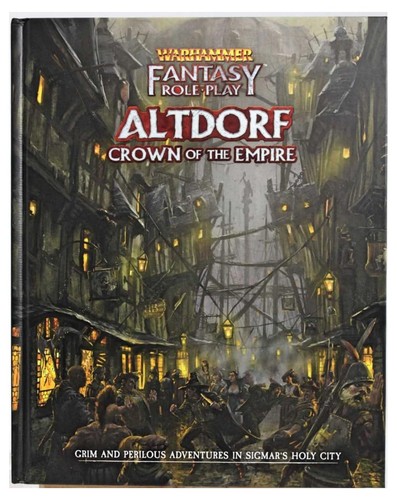Whilst the chaos of the Turmoil subsides, an invigorated Empire seeks to leave civil strife …
"On the 25th of Sigmarzeit, Salzenmund celebrates Silberfest. The whole city comes out to watch colourful litters borne through the streets, each carrying a child dressed to represent a particular guild. The final litter is the ‘Silver King’, patronised by the Nordland Silversmiths’ Guild. At the end of the parade the ‘Silver King’ meets the prince of Salzenmund as an equal. The litters are carried to the waterfront, where the children take to boats and sail onto the Ormsdeep carrying lanterns to light their way. Finally, the Silver King reaches the centre of the lake and jumps into the water. In modern times someone fishes him out."
— Salzenmund - City of Salt and Silver by Simon Wileman, Dave Allen, Samuel Poots, and 1 other


